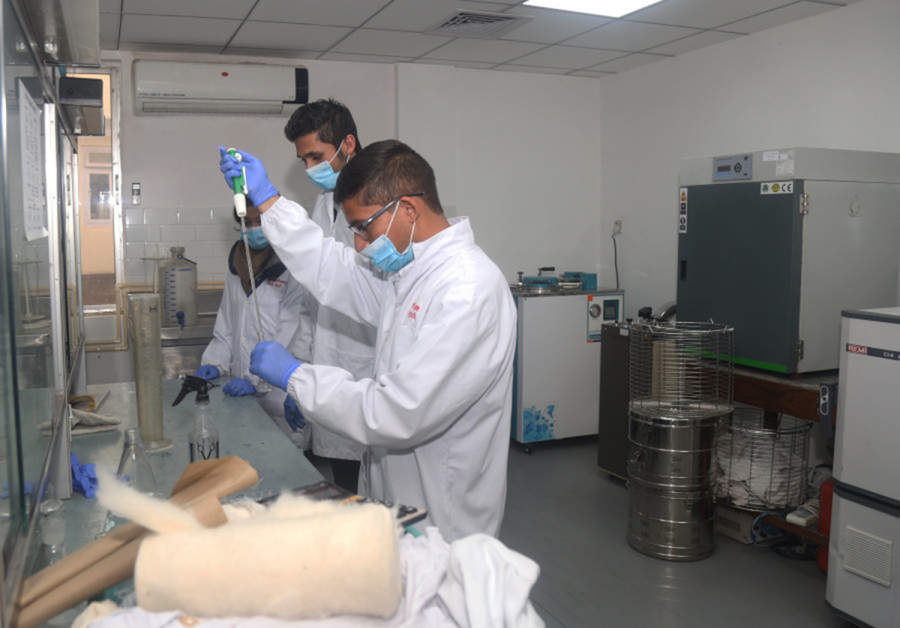Health
Experts advise national health laboratory to upgrade its bio-safety level 3 facility
A team recommended by the World Health Organisation examined the laboratory.
Arjun Poudel
Amid growing concerns of possible spread of new and deadly viruses including a new strain of coronavirus among the public, the National Public Health Laboratory, under the Department of Health Services, had its bio-safety level-3 laboratory examined by engineers recommended by the World Health Organization.
Experts from the National Institute of Virology in Pune, India, who were invited by the UN health agency's country office in Nepal, had inspected the laboratory recently.
"The team invited by the World Health Organization to examine the bio-safety level-3 laboratory have given us suggestions to repair, maintain and update the laboratory," Dr Runa Jha, director at the National Public Health Laboratory, told the Post. "We will follow the suggestions and work according to their directions.”
Apart from maintaining the standards of bio-safety level-1 and 2, the bio-safety level-3 laboratory must consider additional safety measures such as isolation of laboratory, sealable room for decontamination, ventilation, airflow and double-door entry, according to the WHO.
Last year, samples of the bird flu virus (influenza H5N1) that killed a 21-year-old man was contained in the bio-safety level-3 laboratory, which was later sent to the WHO collaborating centre in Japan for confirmation.
Jha said that the bio-safety level-3 laboratory could handle and examine samples of deadly viruses if the laboratory could be brought into operation.
The certification was last done in 2016.
The laboratory, set up with the financial assistance of the World Bank in 2012, was certified twice in 2014 and in 2016.
According to the international norms, certification of a bio-safety level-3 laboratory should be carried out every two years. For certification, the laboratory will have to meet all the requirements stated by the inspection team.
An official at the laboratory said that even if the maintenance and repair works were conducted, bringing the laboratory into operation was difficult due to a lack of trained human resources.
"At least four technicians, one biomedical engineer, one electrical engineer and other support staff would be required to run the laboratory. We do not have any of those,” one of the lab staff said. "Our directors have been drawing the attention of concerned officials at the health ministry about the lack of human resources."
The staff, who prefers not to be named since he is not authorised to speak to the media, said that the laboratory is physically equipped to run preliminary tests of all flu including noble coronavirus.
Meanwhile, the Epidemiology and Disease Control Division said that it has been working to send the specimen of a Nepali patient suspected of being infected with a new strain of coronavirus to the WHO collaborating centre for examination.
The 31-year-old patient, who had returned from Wuhan city in China earlier this month had visited Sukraraj Tropical and Infectious Disease Hospital in Teku last week, with complaints of fever, sore throat and pneumonia-like symptoms. Doctors were worried that he might have contracted the new strain of coronavirus that killed at least three people and infected around 200 people in China, and kept him under observation for five days before discharging.
Dr Bishnu Gautam, an official at the division said that the WHO has sent out a circular with new diagnostic guidelines to identify the new strain of coronavirus. According to the diagnostic guideline, health workers are suggested to inquire the patients if he/she has returned from Wuhan and to check if they are suffering from influenza-like symptoms.




 19.12°C Kathmandu
19.12°C Kathmandu












%20(1).jpg&w=300&height=200)

